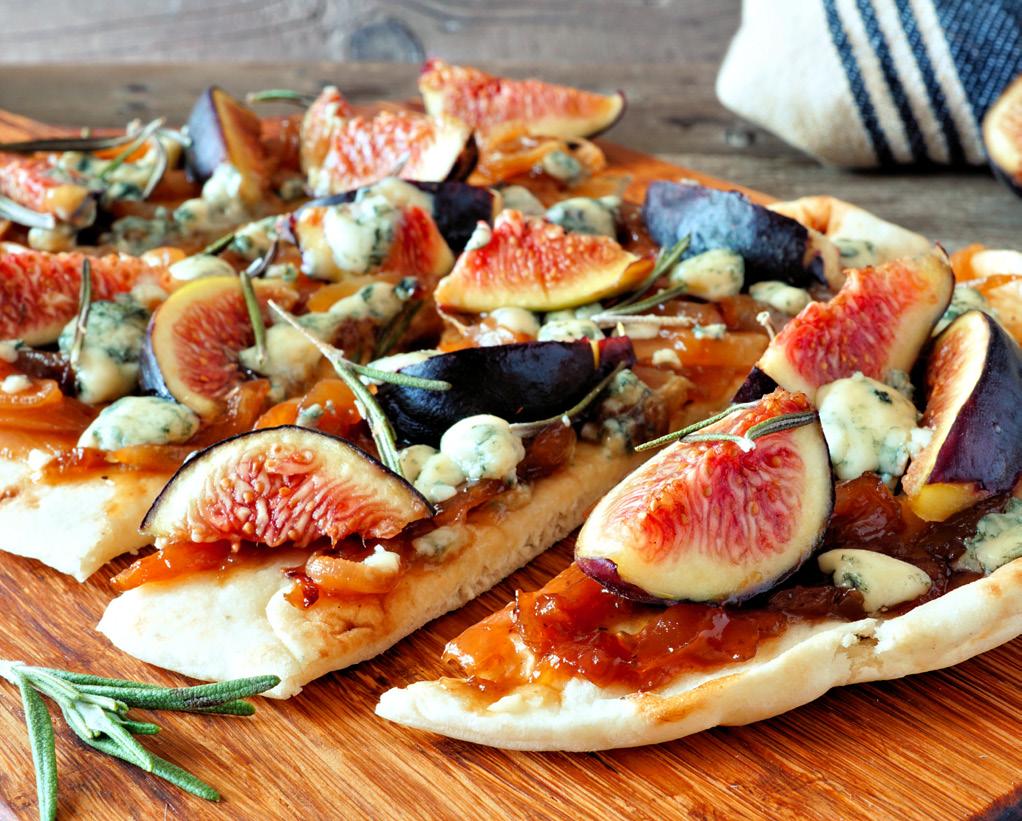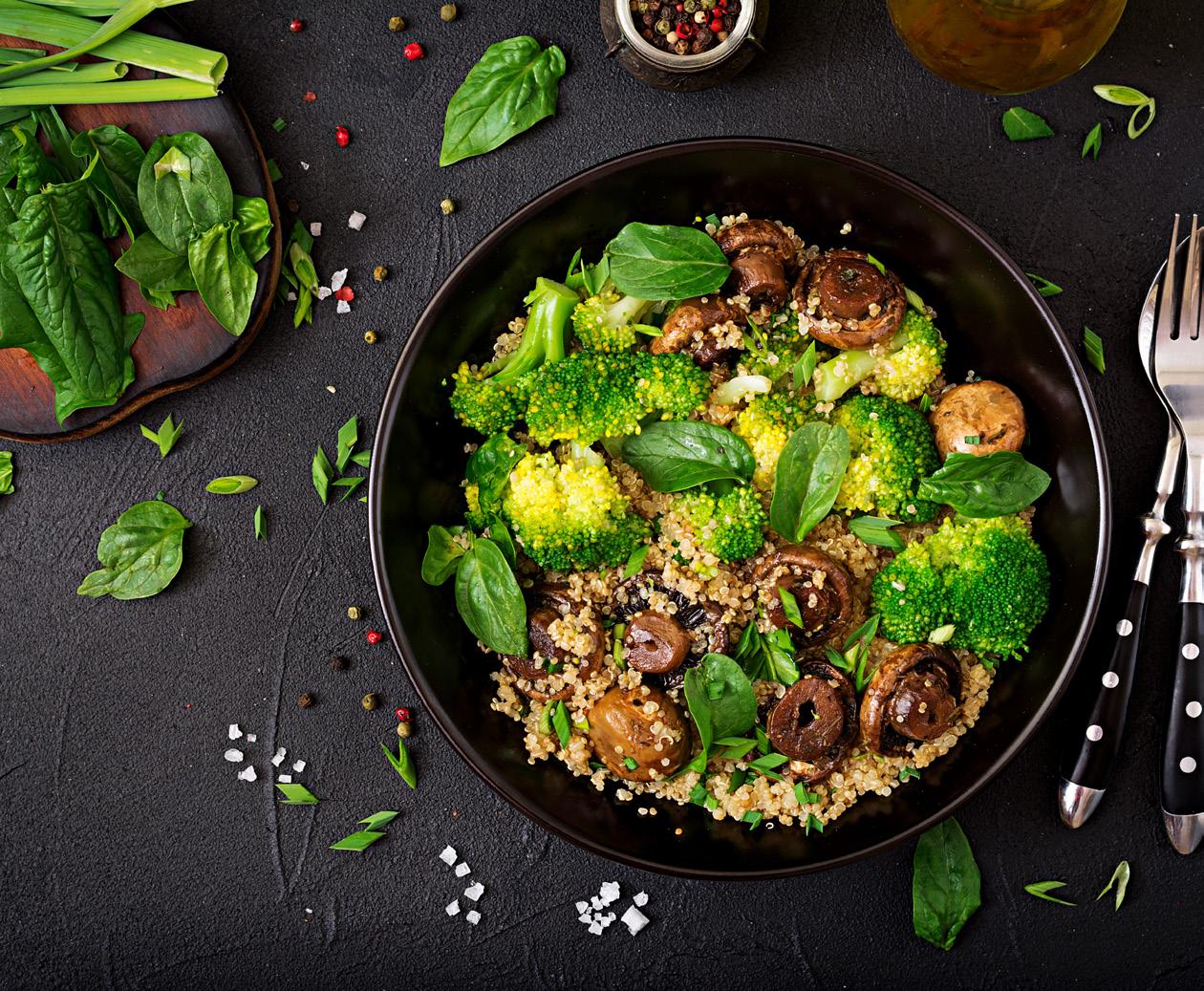
4 minute read
Safety first: Transparency tops 2021 food trends interview with LuAnn Williams, Global Insights Director, Innova Market Insights
Safety first: Transparency tops 2021 food trends interview with LuAnn Williams, Global Insights Director, Innova Market Insights
Supply chain transparency will dominate food and beverage trends in 2021 as consumers seek safe and reassuring foods, according to Innova Market Insights – but discovery is another major theme. In light of the global health crisis, shoppers are looking for increased transparency to meet ongoing demand for clean label, ethical and sustainable foods, and there is still plenty of room for new food experiences in the market research organisation’s latest annual trends report.
“If you think about transparency, and even to some extent modern nostalgia, consumers are looking for reassurance; they want safety,” said Lu Ann Williams, Director of Innovation at Innova Market Insights, citing two of its top ten predictions for 2021.
LuAnn Williams Global Insights Director Innova Market Insights
She highlighted that business is booming for many big food companies as consumers seek foods that they know and trust to be safe. Meanwhile, as sources of fun became limited for many people in 2020, learning to cook and increased experimentation in the kitchen led consumers to revisit beloved family recipes and give them a modern makeover – perhaps a plant-forward version of Grandma’s meatloaf, for instance.
Food manufacturers are catching on. Williams gives the example of crispy-coated meat croquettes, a Dutch specialty. Recently, McDonald’s released a plant-based version in the Netherlands, giving the nostalgic food item a modern twist.
Evolving trends
At the beginning of the Covid-19 pandemic, Innova carried out a 12-country survey and found that trends such as plant-forward and hybrid food development – or ‘product mashups’ – look set to evolve and continue.
“Plant-based is interesting because this is the third year when it is at the top of our list. At the beginning, it was plant milks and then meat alternatives.”
Now, she suggests the plant-based trend is moving away from just imitating existing products. “It is splitting into a thousand little pieces,” she said. “…Plant-based will also move into things that are completely different. It will be a whole new generation of things we haven’t even thought about yet.”
Product mashups are also becoming more adventurous. The trend started with the cronut a few years ago, a croissant-donut hybrid. Now, mainstream companies like Post and Dunkin Donuts have collaborated on a coffee-flavoured cereal, while in China, Pizza Hut and tea brand Lelecha teamed up to create a drinkable pizza, featuring peach flavoured cheese tea in a pan-style cheese pizza crust, topped with diced peach and dragon fruit.

Beyond the major industry players, smaller food service outlets, restaurants and bars have had to branch out into new areas in light of Covid-related restrictions, too. Innova’s ‘Omnichannel Eating’ trend reflects this, with home cooking, meal kits, expanded delivery services and more sophisticated ingredients on the rise. “[Companies] found new ways to connect with their customers,” Williams said.
Holistic approach to wellness
Other new trends, such as ‘Mood: The Next Occasion’, ‘In Tune with Immune’, ‘Tailored to Fit’ and ‘Nutrition Hacking’, reflect a renewed interest in health and personalised nutrition, whether for physical or mental wellbeing.
“We are seeing very rapid growth in products that promote sleep or some kind of well-being,” Williams said, adding that both Coca-Cola and PepsiCo have made recent introductions in this area. “We think mood is the next occasion,” she said. “It comes back to this holistic way of taking care of emotional, physical and spiritual health.”
At the same time, fitness trackers and increased access to food intolerance testing have allowed for a more personalised approach to diet and health.
“A lot of people are tracking like crazy with their Fitbits and people are also looking more and more to tailor what they buy,” she said. “Gluten-free was the first big trend that happened that made consumers realise they could eat what was good for them, and not necessarily what was good for somebody else…Before, you could guess what was good for you, but now you can prove it, and you have more products that are tailored for your needs.”
In addition, functional and fortified foods are back, according to Innova. “We went through eight or ten years of this very inherent nutritional approach and now we are asking consumers whether they agree with the science, and they are more willing to accept a less natural approach if it speaks to their dietary needs,” Williams said.
Connection and balance
The report suggests that finding a balance between discovery and nostalgia, health and indulgence will be important for successful product development in 2021. However, transparency links all these trends together.
“It is important to connect with your consumers in a really meaningful way. Whether it is good for immunity or safe to eat, those meaningful messages are really important right now,” she said. Rounding out the top ten, ‘The Age of the Influencer’ trend is related to this idea of meaningful connection, as consumers increasingly are interested in who is advising them on what to eat. “They are asking themselves, who is to be trusted right now?” Williams said. “They think about the ingredients and how it’s made, or it might be about communicating that something is a ton of fun – that’s OK too.”








